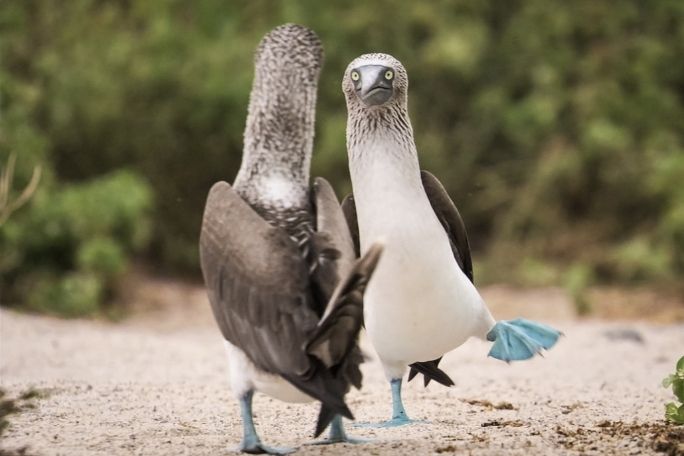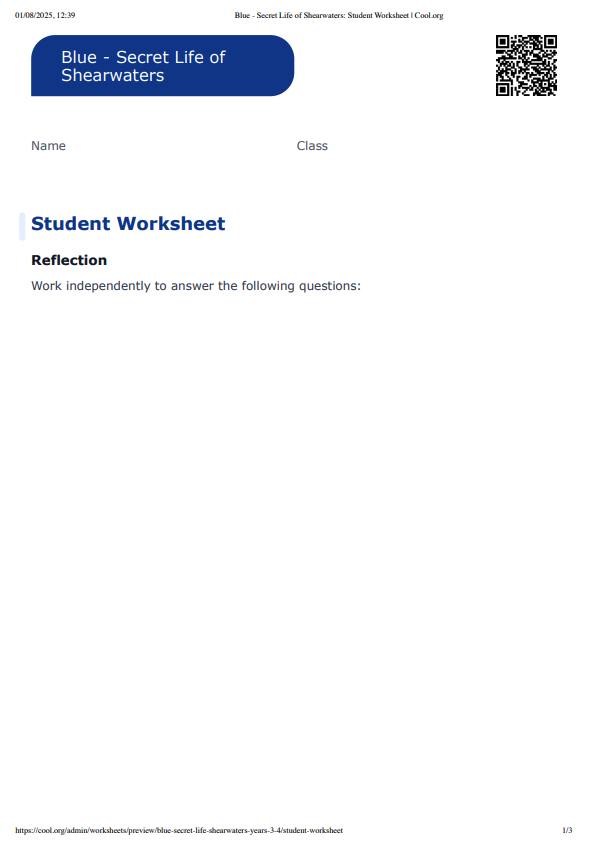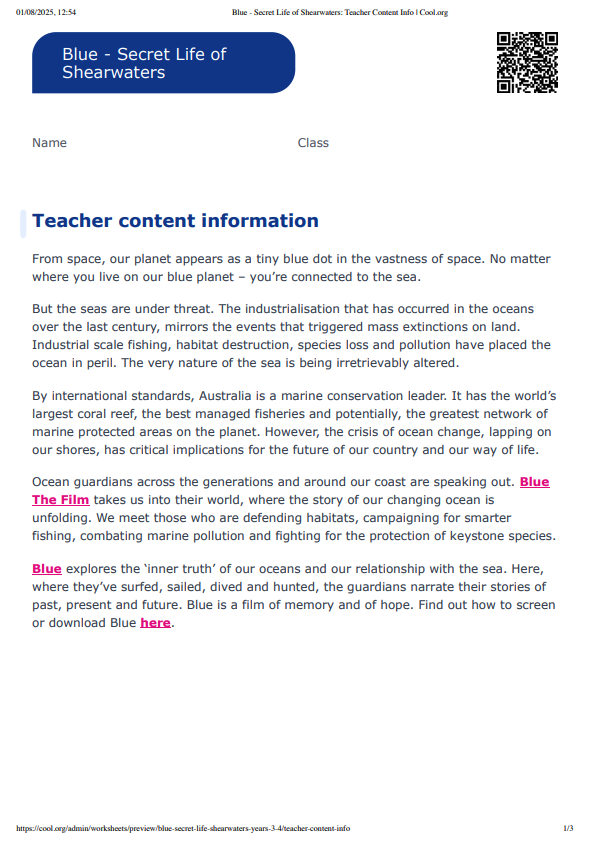Lesson summary
This lesson incorporates clips from Blue The Film as learning inspiration. In this lesson, students investigate shearwaters and how human behaviours threaten shearwaters and other seabirds. They begin by defining the features of all birds and, in particular, the Flesh-footed Shearwater. They then participate in a role play and a drawing activity to identify the stages of the Flesh-footed Shearwater’s lifecycle, from egg to adult. Finally, students consider how human behaviours – in particular, plastic waste – can impact the oceans and the creatures that live there. Students will explore ways to take action and ‘STOP the DROP’ of litter in their schoolyard and local area.
Learning intentions:
Students will...
- learn about the lifecycle of a shearwater
- recognise some of the human behaviours that affect the health of all seabirds, including shearwaters.
Success criteria:
Students can...
- identify up to three features of a shearwater
- identify three different things a shearwater needs to live
- create an action to help shearwaters by taking part in a ‘STOP the DROP’ action.
Lesson guides and printables
Curriculum links
Select your curriculum from the options below.
Lesson details
Skills
This lesson is designed to build students’ competencies in the following skills:
- communication
- collaboration
- problem solving
Curriculum Mapping
Australian Curriculum content descriptions:
Year 3 Science:
- Living things can be grouped on the basis of observable features and can be distinguished from non-living things (ACSSU044)
Year 4 Science:
- Living things have life cycles (ACSSU072)
- Living things depend on each other and the environment to survive (ACSSU073)
- Represent and communicate observations, ideas and findings using formal and informal representations (ACSIS071)
Syllabus outcomes: ST2-10LW, ST2-11LW, ST2-4WS.
General capabilities: Critical and Creative Thinking
Cross-curriculum priority: Sustainability
Relevant parts of Year 3 Science achievement standards: Students group living things based on observable features and distinguish them from non-living things.
Relevant parts of Year 4 Science achievement standards: Students describe relationships that assist the survival of living things and sequence key stages in the life cycle of a plant or animal. They use formal and informal ways to communicate their observations and findings.
Unit of work: Blue The Film: Inquiry – Years 3 & 4.
Time required: 60 mins.
Level of teacher scaffolding: Medium – oversee activities and lead discussions.
UN Sustainable Development Goals
- Target 14.1: By 2025, prevent and significantly reduce marine pollution of all kinds, in particular from land-based activities, including marine debris and nutrient pollution.
Resources Required
- Student Worksheet – one copy per student
- Device capable of presenting a website to the class
- Flesh-footed Shearwaters Life Cycle Challenge Sheet (enlarged and printed on A3 sized paper – one copy for each pair of students)
- Scissors
- Drawing materials
- Flesh-footed Shearwater Picture
- Once piece of A4 paper
- Blu-tack
Additional Info
Blue is a feature documentary film charting the drastic decline in the health of our oceans. With more than half of all marine life lost and the expansion of the industrialization of the seas, the film sets out the challenges we are facing and the opportunities for positive change. Blue changes the way we think about our liquid world and inspires the audience to action. Find out how to screen or download the film here. Along with the film is an ambitious global campaign to create advocacy and behaviour change through the #oceanguardian movement. To become an ocean guardian, see the website.
Related Professional Learning
How To Teach Sustainability With Hope
Quick summary: This course is for both primary and secondary teachers of all subjects, but especially for English, Science, Humanities and Geography teachers who are covering climate change and the cross-curriculum priority of sustainability.




Welcome back!
Don't have an account yet?
Log in with:
Create your free Cool.org account.
Many of our resources are free, with an option to upgrade to Cool+ for premium content.
Already have an account?
Sign up with:
By signing up you accept Cool.org's Terms and Conditions(Opens in new tab) and Privacy Policy(Opens in new tab).